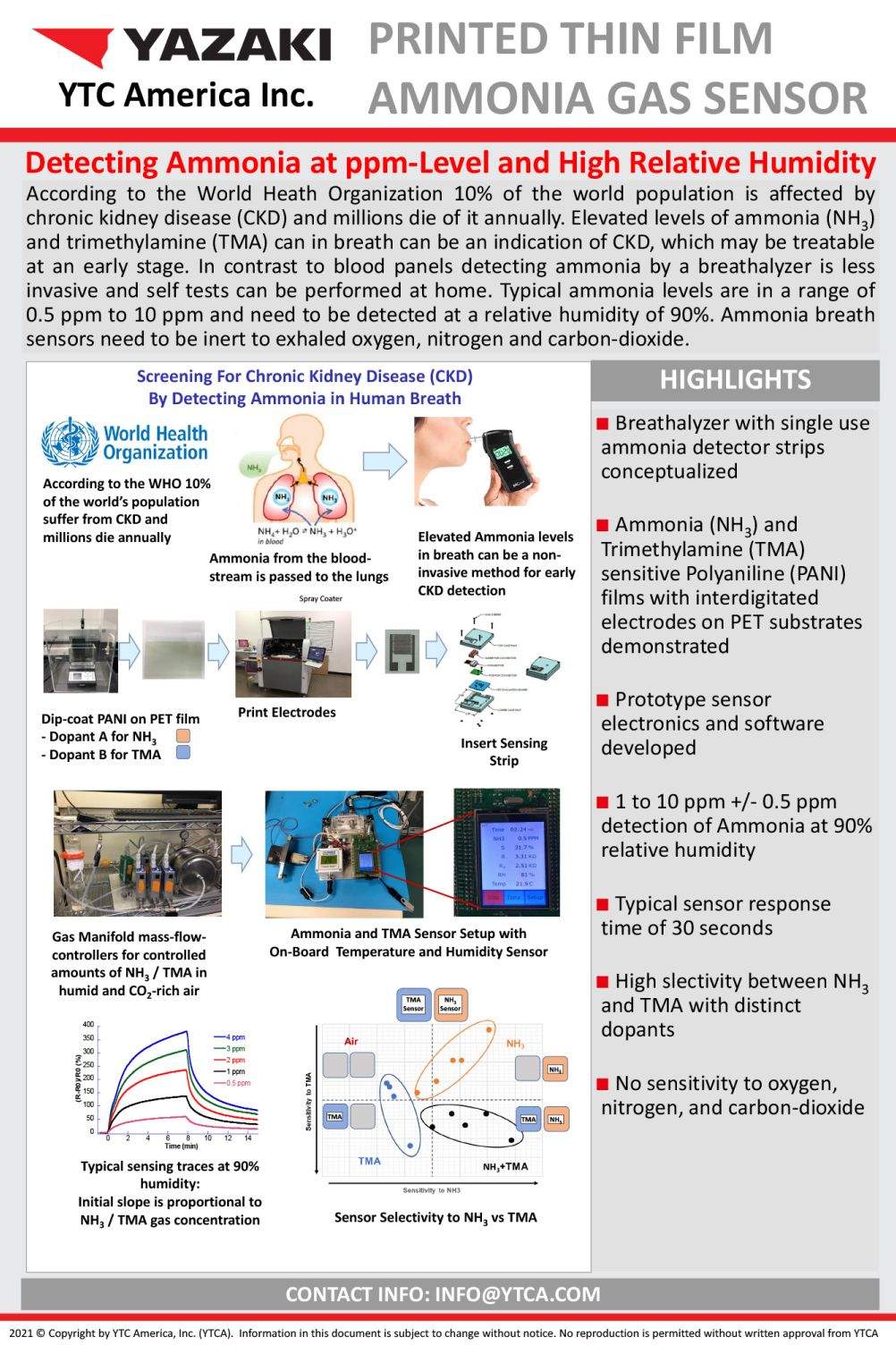Printed Thin Film Ammonia Gas Sensor


Printed Thin Film Ammonia Gas Sensor

Detecting Ammonia at ppm-Level and High Relative Humidity
According to the World Heath Organization 10% of the world population is affected by chronic kidney disease (CKD) and millions die of it annually. Elevated levels of ammonia (NH₃) and trimethylamine (TMA) in breath can be an indication of CKD, which may be treatable at an early stage. In contrast to blood panels detecting ammonia by a breathalyzer is less invasive and self tests can be performed at home. Typical ammonia levels are in a range of 0.5 ppm to 10 ppm and need to be detected at a relative humidity of 90%. Ammonia breath sensors need to be inert to exhaled oxygen, nitrogen and carbon-dioxide.
- Breathalyzer with single use ammonia detector strips conceptualized
- Ammonia (NH3) and Trimethylamine (TMA) sensitive Polyaniline (PANI) films with interdigitated electrodes on PET substrates demonstrated
- Prototype sensor electronics and software developed
- 1 to 10 ppm +/- 0.5 ppm detection of Ammonia at 90% relative humidity
- Typical sensor response time of 30 seconds
- High slectivity between NH3 and TMA with distinct dopants
- No sensitivity to oxygen, nitrogen, and carbon-dioxide
Detecting Ammonia at ppm-Level and High Relative Humidity
According to the World Heath Organization 10% of the world population is affected by chronic kidney disease (CKD) and millions die of it annually. Elevated levels of ammonia (NH₃) and trimethylamine (TMA) in breath can be an indication of CKD, which may be treatable at an early stage. In contrast to blood panels detecting ammonia by a breathalyzer is less invasive and self tests can be performed at home. Typical ammonia levels are in a range of 0.5 ppm to 10 ppm and need to be detected at a relative humidity of 90%. Ammonia breath sensors need to be inert to exhaled oxygen, nitrogen and carbon-dioxide.
- Breathalyzer with single use ammonia detector strips conceptualized
- Ammonia (NH3) and Trimethylamine (TMA) sensitive Polyaniline (PANI) films with interdigitated electrodes on PET substrates demonstrated
- Prototype sensor electronics and software developed
- 1 to 10 ppm +/- 0.5 ppm detection of Ammonia at 90% relative humidity
- Typical sensor response time of 30 seconds
- High slectivity between NH3 and TMA with distinct dopants
- No sensitivity to oxygen, nitrogen, and carbon-dioxide
